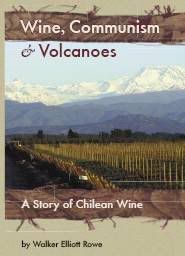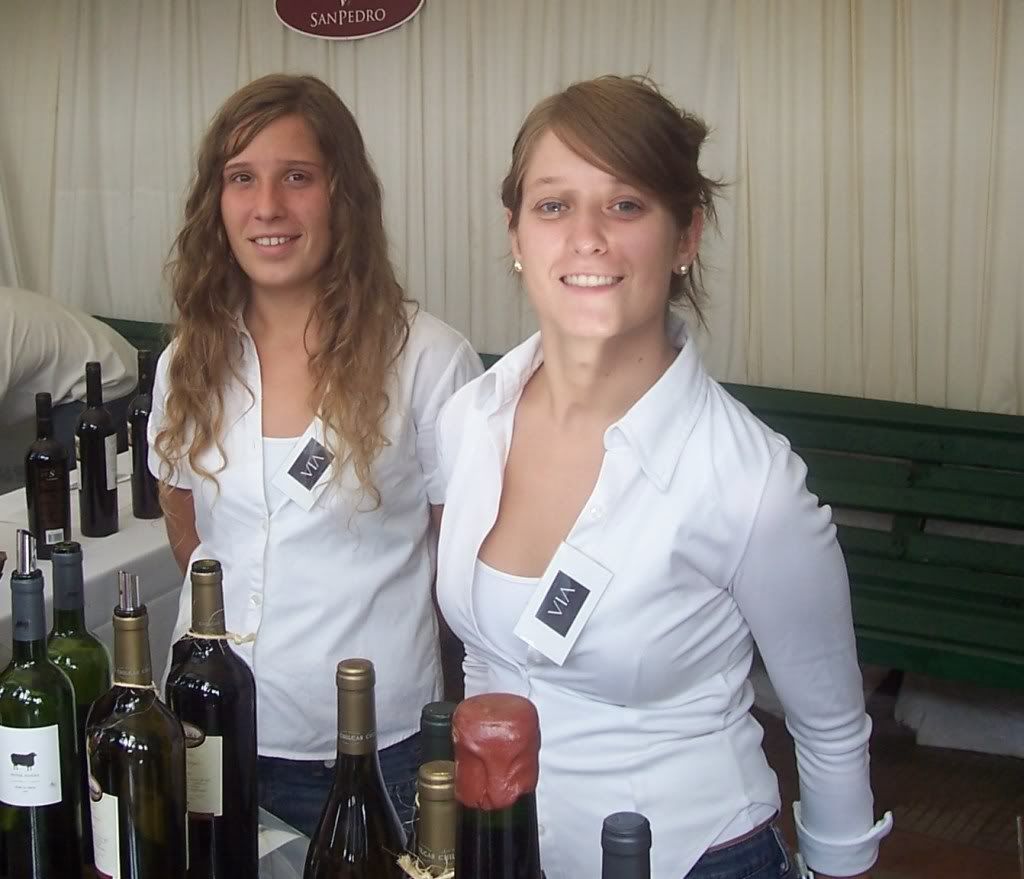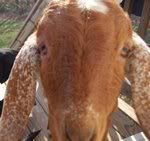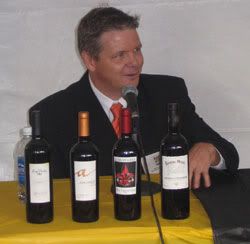I am here in Puerto Montt near the bottom of Chile and consequently the bottom of the planet where the Pacific Ocean, which one normally thinks of as lying to the west, surrounds the peninsula here both in a southerly and westerly direction. The wind is howling and the rain blowing in this corner of Patagonia where rain falls some 300 days of the year.
My wife and I have left behind the dry climate of Santiago for a few days amongst what in Spanish they call “naturaleza”. Here there are not one but three volcanoes each higher than the next. The Volcan Osorno looms above the town of Puerta Varas reflected in the waters of the lake Lanquihue as if in a postcard. A postcard is in fact the only way we can see the top of the volcano today because of the cloud cover.
I've left the goat farm in the hands of a goatherd and the vineyard in the care of another farmer while I come here to both repair relations with my wife, who lives in Santiago, and look for work in the USA. Each day I answer emails from IT recruiters in the USA and talk on the phone with prospective employers using the wonderful program Skype. It's two cents per minute.
Today we are taking the ferry across to the island of Chiloe. You board a bus which for 7,000 pesos ($12) will take us to the town of Castro including the 45 minute board ride across the bay. Yesterday the ferries were shutdown because of the howling gale. So we braced against the rain and joined the legions of high school kids hanging out at the mall while I looked for a charger for the battery for my camera.
I find it amusing the the hostel where I am staying is located on the Avenue Salvador Allende and I am heading to Castro. My wife is a pinochenista or supporter of the dicator Pinochet who sacked the Marxist President Allende and took on the role of leader of the military junta. Emotions over this period of time run deep which I learned when I made the mistake of naming my second book “Wine Communism and Volcanoes”. I should have called it “The Gringo and the Harvest” because the winery owners here, who for the most part supported Pinochet, are embarrassed by their communist past and my book did not sell well here.
That does not matter now as I have written a new book with a larger publisher which I believe we will call “Virginia Wines from Grapes to Glass”. I turned in the last chapter friday—now the process of editing begins. So I have something to do to fill the days before I return to the grind of the daily corporate job.
Gricel, my wife, and I went to the office of Lan Chile airlines last week and looked for a promotion, cheap flights to wherever. We thought of the Valle del Luna in the desert to the North or Puntas Arenas which is at the bottom of the country. But both locations were too expensive so we settled on Puerto Montt which is no disappointment at all.
Two days ago we hired a van and went with a family from Valpairso and two single girls from Ecuador and Argentia to visit the volcano here and see the lake. As such things usually transpire by the end of the day we were all friends and had exchanged email addresses promising to share photos with people we will never see again.
Geography in this part of the world is large on a scale which is hard to imagine. Driving up to see the Saltos de Petrohue (Petrohue Rapids) we passed a lofty mountain that rose straight up into the horizon which the chauffer told us was the precordillera. The Andes here are called the “cordillera” and of course “ precordillera” would mean the foothills but in their towering immensity they are taller than anything we have in the well-eroded mountains of Virginia Appalachia. In Virginia we have little tiny trout swimming in the stream but in the stream here there are salmon roughly a meter in length, huge animals laying their eggs on their way back to the ocean.
After Puerto Montt we spend two days in Chiloe. The strongest earthquake from recorded history rocked this region in 1960 sinking the coastline by a meter. To get to Chiloe you take a bus which then takes a ferry across to the island. It's a pleasant location with a cloud of sadness hanging over it for 9,000 people are unemployed having lost their jobs in the salmon farming business when a virus invaded the fisheries. The fisheries are still closed after two years.
If you go to Chiloe visit Castro and there stop in and talk with the owner at Loco Tony's supermarket. He is a retired fisherman from Maine.

Continue Reading...







